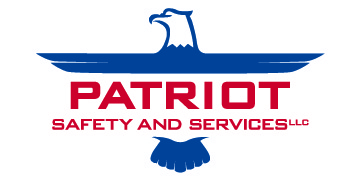Employers committed to safety and compliance understand that physical exams are more than routine checkups—they’re legal and operational necessities. For companies with safety-sensitive employees, managing both DOT non-DOT physicals is a core responsibility. But what exactly differentiates these exams? How do you know which type of physical is required for each employee? And how can you manage both without added stress?
In this blog, we’ll clarify the distinctions between DOT non-DOT physicals, outline when each is needed, and explain how to keep your compliance program organized across different workforce segments.
What Are DOT Non-DOT Physicals?
DOT non-DOT physicals refer to the two primary categories of workplace physicals:
DOT physicals are federally mandated for employees in safety-sensitive positions regulated by the Department of Transportation (DOT).
Non-DOT physicals are employer-required exams for positions that may involve physical labor or health screening but are not covered by DOT regulations.
Together, DOT non-DOT physicals allow employers to screen their entire workforce appropriately, based on role-specific risk and regulatory obligations.
Key Differences Between DOT and Non-DOT Physicals
Understanding the differences between DOT non-DOT physicals helps ensure you’re assigning the correct exam to each employee and staying compliant with both federal law and company policy.
- Regulatory Oversight
DOT Physicals are governed by the Federal Motor Carrier Safety Administration (FMCSA) and other DOT agencies.
Non-DOT Physicals are governed by internal company policy and are not federally mandated.
- Who Needs Them
DOT Physicals are required for CDL drivers, bus operators, hazardous material handlers, and others in safety-sensitive DOT-regulated roles.
Non-DOT Physicals may be required for warehouse workers, construction employees, or anyone performing physically demanding tasks not regulated by the DOT.
- Exam Components
DOT Physicals include specific federally mandated components like blood pressure testing, vision/hearing screening, urinalysis, and medical history review, conducted by a certified Medical Examiner.
Non-DOT Physicals can be customized by the employer and may include physical fitness assessments, respiratory exams, or job-specific mobility evaluations.
- Documentation and Recordkeeping
DOT Physicals result in a Medical Examiner’s Certificate (DOT card), which must be retained for compliance and carried by the employee.
Non-DOT Physicals are documented per company policy, often in internal HR or occupational health files.
When Are DOT Non-DOT Physicals Required?
Employers often manage both types of physicals within the same company. Knowing when each applies is crucial.
DOT Physicals Are Required:
Before a CDL driver can begin safety-sensitive duties
Every 24 months (or more frequently if there are medical concerns)
After a reportable injury or incident involving a regulated vehicle
Before returning to work post-leave for certain health conditions
Non-DOT Physicals Are Used:
For roles requiring physical labor (construction, manufacturing, warehousing)
As part of pre-employment screening to assess physical capability
For workers returning after injury or medical leave
As part of annual wellness or job fitness programs
By clearly defining which roles require which exams, employers can ensure that DOT non-DOT physicals are applied correctly and consistently.
Managing DOT Non-DOT Physicals Across a Workforce
For companies with a mix of DOT-regulated and non-DOT roles, managing both types of physicals can feel complex. Here are a few best practices for staying organized:
- Create Clear Job Role Classifications
Label each position within your organization as DOT-regulated or non-DOT. This reduces confusion during onboarding and ensures employees complete the correct physical from the start.
- Maintain a Centralized Tracking System
Use software or third-party support to track physical expiration dates, exam results, and medical clearance status for all employees. This ensures you never miss a renewal or forget required documentation.
- Partner with a Provider That Handles Both
Choose a partner like Patriot Safety and Services that offers both DOT non-DOT physicals, so your entire workforce can be served under one streamlined program.
The Role of Physical Exams in Risk Management
Both DOT non-DOT physicals serve as proactive tools to reduce workplace injuries, increase safety, and promote health across the workforce.
DOT Physicals ensure that individuals operating commercial vehicles are medically fit, reducing the risk of on-road incidents.
Non-DOT Physicals ensure that employees can safely perform job duties, reducing strain-related injuries and workers’ comp claims.
By using both types of physicals strategically, employers can identify health issues before they lead to accidents or lost productivity—and reduce liability in the event of an incident.
Why Employers Choose Patriot for DOT Non-DOT Physicals
At Patriot Safety and Services, we provide efficient, compliant, and customized DOT non-DOT physicals for employers across Texas and the southeastern U.S. Our team works with both regulated and non-regulated workforces to keep compliance simple and workforce health a priority.
Our Physical Exam Services Include:
DOT-certified physicals by FMCSA-registered Medical Examiners
Pre-employment, return-to-work, and fitness-for-duty exams
On-site physicals and mobile clinic options
Recordkeeping and scheduling support
Integration with drug testing and background screening programs
Whether you’re managing ten drivers or two hundred laborers, our solutions for DOT non-DOT physicals help you reduce risk, meet legal requirements, and support a healthy workforce.
Final Thoughts
Clear, consistent physical exam policies are essential for maintaining workplace safety and compliance. By understanding the differences and appropriate use cases for DOT non-DOT physicals, employers can protect their teams, reduce liability, and meet both regulatory and operational demands.
If you’re managing both DOT and non-DOT employees, partner with a provider like Patriot Safety and Services to streamline your process and ensure every employee receives the right exam at the right time.





